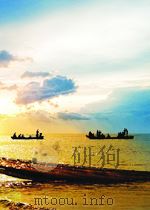《fundamentals of heat and mass transfer fifth edition P985》
| 作者 | 编者 |
|---|---|
| 出版 | 未查询到或未知 |
| 参考页数 | |
| 出版时间 | 没有确切时间的资料 目录预览 |
| ISBN号 | 无 — 求助条款 |
| PDF编号 | 820579308(仅供预览,未存储实际文件) |
| 求助格式 | 扫描PDF(若分多册发行,每次仅能受理1册) |

CHAPTER1Introduction2
1.1 What and How?2
1.2Physical Origins and Rate Equations3
1.2.1 Conduction3
1.2.2 Convection6
1.2.3 Radiation9
1.2.4 Relationship to Thermodynamics12
1.3The Conservation of Energy Requirement13
1.3.1 Conservation of Energy for a Control Volume13
1.3.2 The Surface Energy Balance21
1.3.3 Application of the Conservation Laws: Methodology24
1.4 Analysis of Heat Transfer Problems: Methodology24
1.5 Relevance of Heat Transfer27
1.6 Units and Dimensions28
1.7 Summary31
Problems34
CHAPTER2Introduction to Conduction51
2.1 The Conduction Rate Equation52
2.2The Thermal Properties of Matter54
2.2.1 Thermal Conductivity54
2.2.2 Other Relevant Properties58
2.3 The Heat Diffusion Equation61
2.4 Boundary and Initial Conditions68
2.5 Summary72
References73
Problems73
CHAPTER3One-Dimensional, Steady-State Conduction87
3.1The Plane Wall88
3.1.1 Temperature Distribution88
3.1.2 Thermal Resistance90
3.1.3 The Composite Wall91
3.1.4 Contact Resistance93
3.2 An Alternative Conduction Analysis101
3.3Radial Systems104
3.3.1 The Cylinder105
3.3.2 The Sphere110
3.4 Summary of One-Dimensional Conduction Results114
3.5Conduction with Thermal Energy Generation114
3.5.1 The Plane Wall115
3.5.2 Radial Systems121
3.5.3 Application of Resistance Concepts126
3.6Heat Transfer from Extended Surfaces126
3.6.1 A General Conduction Analysis128
3.6.2 Fins of Uniform Cross-Sectional Area130
3.6.3 Fin Performance136
3.6.4 Fins of Nonuniform Cross-Sectional Area139
3.6.5 Overall Surface Efficiency140
3.7 Summary149
References152
Problems152
CHAPTER4Two-Dimensional, Steady-State Conduction183
4.1 Alternative Approaches184
4.2 The Method of Separation of Variables185
4.3The Graphical Method189
4.3.1 Methodology of Constrncting a Flux Plot190
4.3.2 Determination of the Heat Transfer Rate191
4.3.3 The Conduction Shape Factor192
4.4Finite-Difference Equations196
4.4.1 The Nodal Network196
4.4.2 Finite-Difference Form of the Heat Equation197
4.4.3 The Energy Balance Method198
4.5Finite-Difference Solutions205
4.5.1 The Matrix Inversion Method206
4.5.2 Gauss-Seidel Iteration207
4.5.3 Some Precautions213
4.6 Summary218
References219
Problems219
CHAPTER5Transient Conduction239
5.1 The Lumped Capacitance Method240
5.2 Validity of the Lumped Capacitance Method243
5.3 General Lumped Capacitance Analysis247
5.4 Spatial Effects254
5.5The Plane Wall with Convection256
5.5.1 Exact Solution256
5.5.2 Approximate Solution257
5.5.3 Total Energy Transfer258
5.5.4 Additional Considerations259
5.6Radial Systems with Convection260
5.6.1 Exact Solutions260
5.6.2 Approximate Solutions261
5.6.3 Total Energy Transfer261
5.6.4 Additional Considerations262
5.7 The Semi-Infinite Solid268
5.8 Multidimensional Effects274
5.9Finite-Difference Methods280
5.9.1 Discretization of the Heat Equation: The Explicit Method280
5.9.2 Discretization of the Heat Equation: The Implicit Method288
5.10 Summary296
References297
Problems297
CHAPTER6Introduction to Convection325
6.1 The Convection Transfer Problem326
6.2The Convection Boundary Layers331
6.2.1 The Velocity Boundary Layer331
6.2.2 The Thermal Boundary Layer332
6.2.3 The Concentration Boundary Layer333
6.2.4 Significance of the Boundary Layers335
6.3 Laminar and Turbulent Flow336
6.4Boundary Layer Equations338
6.4.1 The Convection Transfer Equations339
6.4.2 The Boundary Layer Approximations344
6.5Boundary Layer Similarity: The Normalized Boundary Layer Equations346
6.5.1 Boundary Layer Similarity Parameters346
6.5.2 Functional Form of the Solutions348
6.6 Physical Significance of the Dimensionless Parameters353
6.7Boundary Layer Analogies356
6.7.1 The Heat and Mass Transfer Analogy356
6.7.2 Evaporative Cooling360
6.7.3 The Reynolds Analogy363
6.8 The Effects of Turbulence364
6.9 The Convection Coefficients367
6.10 Summary368
References369
Problems369
CHAPTER7External Flow385
7.1 The Empirical Method387
7.2The Flat Plate in Parallel Flow389
7.2.1 Laminar Flow: A Similarity Solution389
7.2.2 Turbulent Flow395
7.2.3 Mixed Boundary Layer Conditions396
7.2.4 Special Cases397
7.3 Methodology for a Convection Calculation399
7.4The Cylinder in Cross Flow401
7.4.1 Flow Considerations407
7.4.2 Convection Heat and Mass Transfer409
7.5 The Sphere415
7.6 Flow Across Banks of Tubes418
7.7Impinging Jets428
7.7.1 Hydrodynamic and Geometric Considerations428
7.7.2 Convection Heat and Mass Transfer430
7.8 Packed Beds434
7.9 Summary435
References437
Problems438
CHAPTER8Internal Flow465
8.1Hydrodynamic Considerations466
8.1.1 Flow Conditions466
8.1.2 The Mean Velocity467
8.1.3 Velocity Profile in the Fully Developed Region468
8.1.4 Pressure Gradient and Friction Factor in Fully Developed Flow470
8.2Thermal Considerations471
8.2.1 The Mean Temperature472
8.2.2 Newton's Law of Cooling473
8.2.3 Fully Developed Conditions473
8.3The Energy Balance477
8.3.1 General Considerations477
8.3.2 Constant Surface Heat Flux478
8.3.3 Constant Surface Temperature481
8.4Laminar Flow in Circular Tubes: Thermal Analysis and Convection Correlations485
8.4.1 The Fully Developed Region485
8.4.2 The Entry Region489
8.5 Convection Correlations: Turbulent Flow in Circular Tubes491
8.6 Convection Correlations: Noncircular Tubes495
8.7 The Concentric Tube Annulus500
8.8 Heat Transfer Enhancement502
8.9 Convection Mass Transfer503
8.10 Summary506
References509
Problems509
CHAPTER9Free Convection533
9.1 Physical Considerations534
9.2 The Governing Equations537
9.3 Similarity Considerations539
9.4 Laminar Free Convection on a Vertical Surface540
9.5 The Effects of Turbulence542
9.6Empirical Correlations: External Free Convection Flows545
9.6.1 The Vertical Plate545
9.6.2 Inclined and Horizontal Plates548
9.6.3 The Long Horizontal Cylinder554
9.6.4 Spheres557
9.7Free Convection within Parallel Plate Channels558
9.7.1 Vertical Channels559
9.7.2 Inclined Channels561
9.8Empirical Correlations: Enclosures561
9.8.1 Rectangular Cavities561
9.8.2 Concentric Cylinders564
9.8.3 Concentric Spheres565
9.9 Combined Free and Forced Convection567
9.10 Convection Mass Transfer568
9.11 Summary569
References570
Problems572
CHAPTER10Boiling and Condensation593
10.1 Dimensionless Parameters in Boiling and Condensation594
10.2 Boiling Modes595
10.3Pool Boiling596
10.3.1 The Boiling Curve596
10.3.2 Modes of Pool Boiling598
10.4Pool Boiling Correlations601
10.4.1 Nucleate Pool Boiling602
10.4.2 Critical Heat Flux for Nucleate Pool Boiling603
10.4.3 Minimum Heat Flux603
10.4.4 Film Pool Boiling604
10.4.5 Parametric Effects on Pool Boiling605
10.5Forced-Convection Boiling610
10.5.1 External Forced-Convection Boiling611
10.5.2 Two-Phase Flow611
10.6 Condensation: Physical Mechanisms613
10.7 Laminar Film Condensation on a Vertical Plate615
10.8 Turbulent Film Condensation619
10.9 Film Condensation on Radial Systems623
10.10 Film Condensation in Horizontal Tubes626
10.11 Dropwise Condensation627
10.12 Summary627
References628
Problems630
CHAPTER11Heat Exchangers641
11.1 Heat Exchanger Types642
11.2 The Overall Heat Transfer Coefficient645
11.3Heat Exchanger Analysis: Use of the Log Mean Temperature Difference647
11.3.1 The Parallel-Flow Heat Exchanger648
11.3.2 The Counterflow Heat Exchanger651
11.3.3 Special Operating Conditions652
11.3.4 Multipass and Cross-Flow Heat Exchangers652
11.4Heat Exchanger Analysis: The Effectiveness-NTU Method659
11.4.1 Definitions660
11.4.2 Effectiveness-NTU Relations661
11.5 Methodology of a Heat Exchanger Calculation668
11.6 Compact Heat Exchangers674
11.7 Summary679
References680
Problems681
CHAPTER12Radiation: Processes and Properties699
12.1 Fundamental Concepts700
12.2Radiation Intensity703
12.2.1 Definitions703
12.2.2 Relation to Emission706
12.2.3 Relation to Irradiation709
12.2.4 Relation to Radiosity711
12.3Blackbody Radiation712
12.3.1 The Planck Distribution713
12.3.2 Wien's Displacement Law713
12.3.3 The Stefan-Boltzmann Law714
12.3.4 Band Emission715
12.4 Sufrace Emission720
12.5Surface Absorption, Reflection, and Transmission728
12.5.1 Absorptivity730
12.5.2 Reflectivity731
12.5.3 Transmissivity732
12.5.4 Special Considerations733
12.6 Kirchhoff s Law738
12.7 The Gray Surface740
12.8 Environmental Radiation746
12.9 Summary752
References756
Problems756
CHAPTER13Radiation Exchange Between Surfaces789
13.1The View Factor790
13.1.1 The View Factor Integral790
13.1.2 View Factor Relations791
13.2 Blackbody Radiation Exchange800
13.3Radiation Exchange Between Diffuse, Gray Surfaces in an Enclosure803
13.3.1 Net Radiation Exchange at a Surface803
13.3.2 Radiation Exchange Between Surfaces805
13.3.3 The Two-Surface Enclosure810
13.3.4 Radiation Shields812
13.3.5 The Reradiating Surface814
13.4 Multimode Heat Transfer818
13.5Additional Effects821
13.5.1 Volumetric Absorption822
13.5.2 Gaseous Emission and Absorption822
13.6 Summary827
References828
Problems828
CHAPTER14Diffusion Mass Transfer859
14.1Physical Origins and Rate Equations860
14.1.1 Physical Origins860
14.1.2 Mixture Composition861
14.1.3 Fick's Law of Diffusion862
14.1.4 Restrictive Conditions863
14.1.5 Mass Diffusion Coefficient867
14.2Conservation of Species867
14.2.1 Conservation of Species for a Control Volume868
14.2.2 The Mass Diffusion Equation868
14.3 Boundary and Initial Conditions871
14.4Mass Diffusion Without Homogeneous Chemical Reactions874
14.4.1 Stationary Media with Specified Surface Concentrations875
14.4.2 Stationary Media with Catalytic Surface Reactions878
14.4.3 Equimolar Counterdiffusion881
14.4.4 Evaporation in a Column884
14.5 Mass Diffusion with Homogeneous Chemical Reactions886
14.6 Transient Diffusion889
14.7 Summary893
References894
Problems895
APPENDIXAThermophysical Properties of Matter903
APPENDIXBMathematical Relations and Functions933
APPENDIXCThermal Conditions Associated with Uniform Energy Generation in One-Dimensional, Steady-State Systems939
APPENDIXDGraphical Representation of One-Dimensional, Transient Conduction in the Plane Wall, Long Cylinder, and Sphere947
APPENDIXEThe Convection Transfer Equations953
E.1 Conservation of Mass954
E.2 Newton's Second Law of Motion955
E.3 Conservation of Energy958
E.4 Conservation of Species961
APPENDIXFArt Integral Laminar Boundary Layer Solution for Parallel Flow Over a Flat Plate963
Index969
《fundamentals of heat and mass transfer fifth edition P985》由于是年代较久的资料都绝版了,几乎不可能购买到实物。如果大家为了学习确实需要,可向博主求助其电子版PDF文件。对合法合规的求助,我会当即受理并将下载地址发送给你。
高度相关资料
-
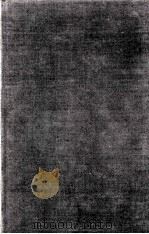
- Heat And Mass Transfer Data Book Third Edition
- 1977 Eastern Limited.
-
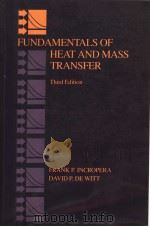
- FUNDAMENTALS OF HEAT AND MASS TRANSFER
- JOHN WILEY & SONS
-
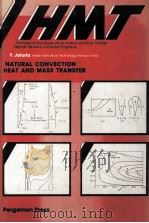
- Natural Convection Heat and Mass Transfer
- 1980 Pergamon Press.
-
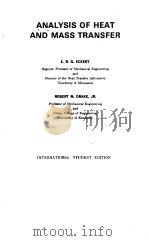
- ANALYSIS OF HEAT AND MASS TRANSFER
- 1972 McGRAW-HILL KOGAKUSHA LTD
-
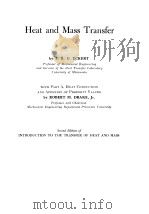
- Heat and Mass Transfer
- 1959 McGRAW-HILL BOOK COPMANY INC
-
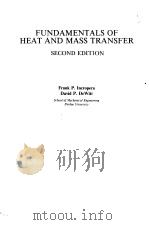
- FUNDAMENTALS OF HEAT AND MASS TRANSFER
- 1981 JOHN WILEY & SONS
-
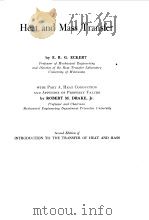
- Heat and Mass Transfer
- 1959 McGRAW-HILL BOOK COPMANY INC
-
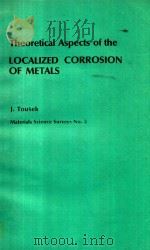
- THEORETICAL ASPECTS OF THE LOCALIZED CORROSION OF METALS
- 1985 TRANS TECH PUBLICATIONS
-

- Basic heat and mass transfer second edition
- 1999 PrenticeHall
-

- Convective Heat and Mass Transfer
- 1966 McGraw-Hill Book Company.
-

- HEAT AND MASS TRANSFER
- 1980 MIR PUBLISHERS
-
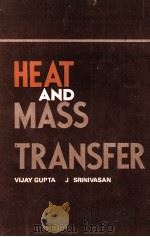
- HEAT AND MASS TRANSFER
- 1978 TAT MCGRAW-HILL PUBLISHING CO.LTD.
-

- FUNDAMENTALS OF HEAT TRANSFER
- PEACE PUBLISHERS
提示:百度云已更名为百度网盘(百度盘),天翼云盘、微盘下载地址……暂未提供。➥ PDF文字可复制化或转WORD
